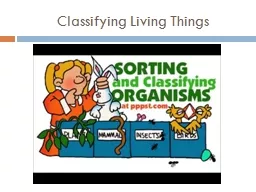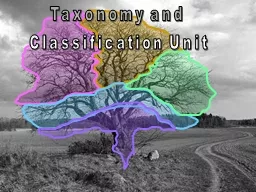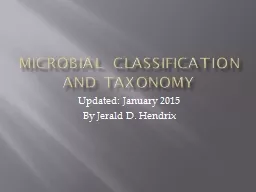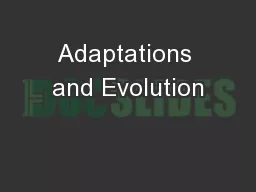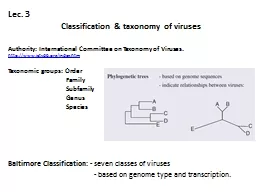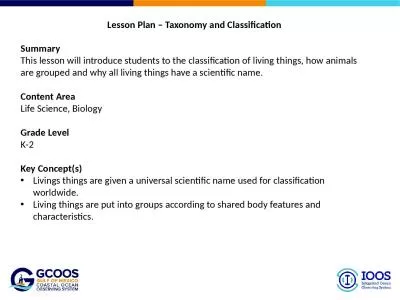PPT-Evolution Notes Chapter 2: Taxonomy and Classification
Author : olivia-moreira | Published Date : 2016-07-26
43014 Scientists classify millions of species 400 years ago scientists believed that related animals looked alike and classified animals based upon their appearance
Presentation Embed Code
Download Presentation
Download Presentation The PPT/PDF document "Evolution Notes Chapter 2: Taxonomy and ..." is the property of its rightful owner. Permission is granted to download and print the materials on this website for personal, non-commercial use only, and to display it on your personal computer provided you do not modify the materials and that you retain all copyright notices contained in the materials. By downloading content from our website, you accept the terms of this agreement.
Evolution Notes Chapter 2: Taxonomy and Classification: Transcript
Download Rules Of Document
"Evolution Notes Chapter 2: Taxonomy and Classification"The content belongs to its owner. You may download and print it for personal use, without modification, and keep all copyright notices. By downloading, you agree to these terms.
Related Documents



